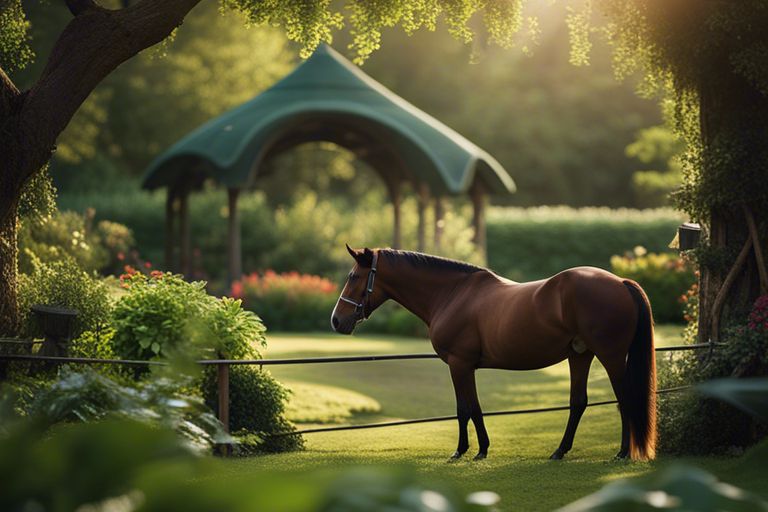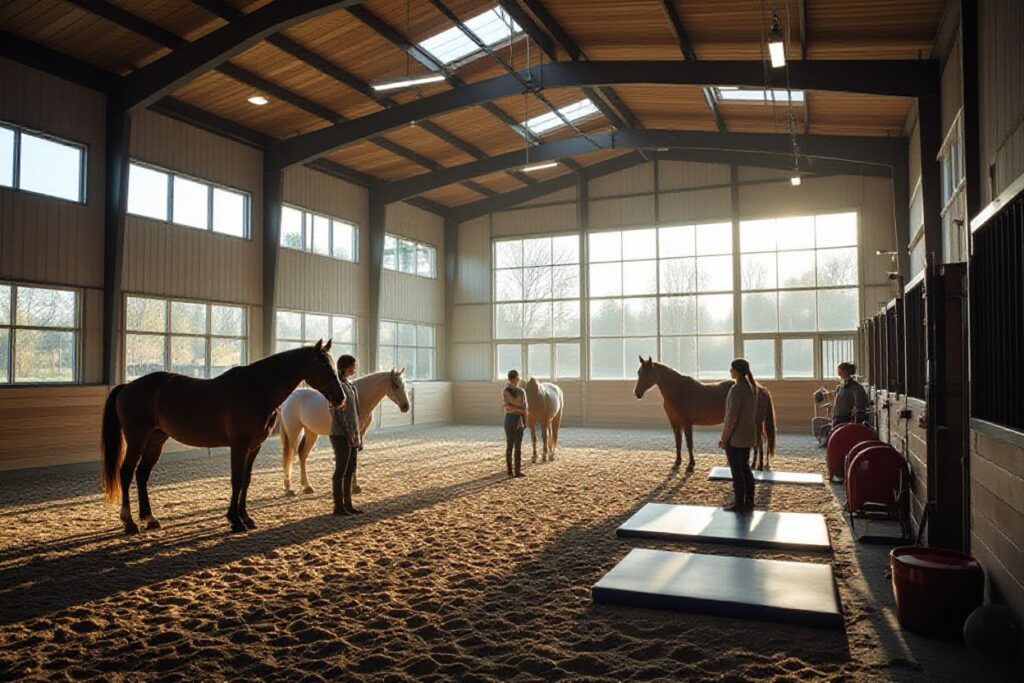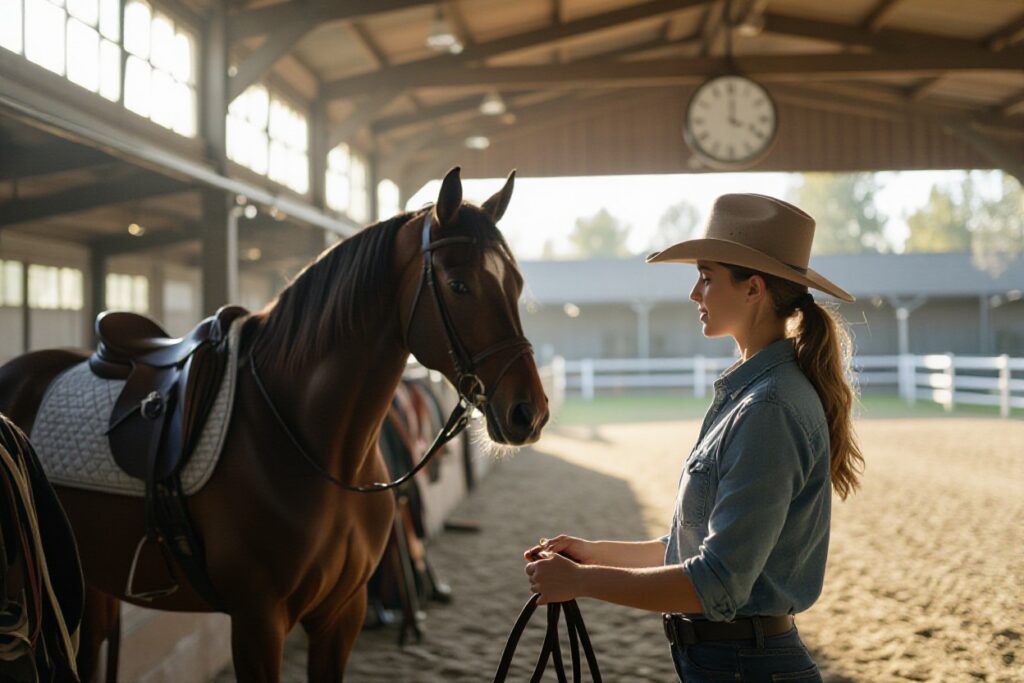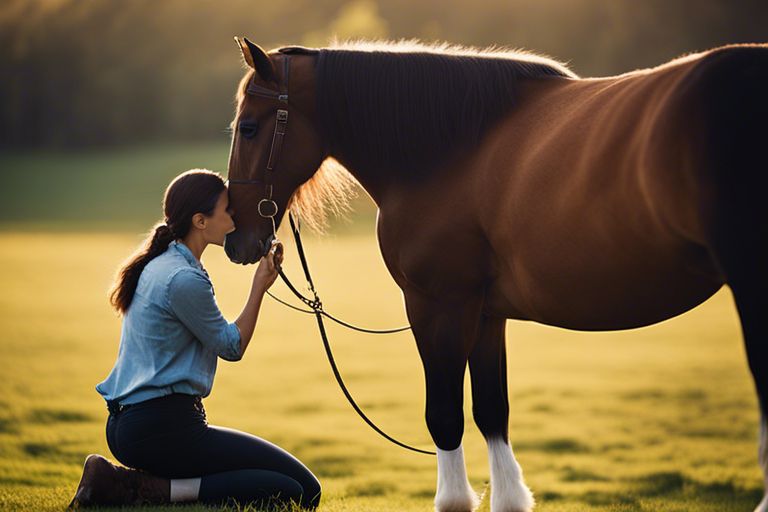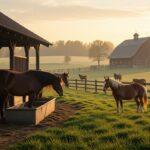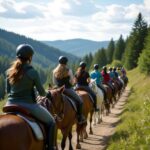There’s nothing quite like watching your beloved horses roaming around a lush, safe garden. To create a horse-friendly paradise in your backyard, you need to carefully plan and design the space. From choosing the right plants to ensuring the fences are secure, there are important steps to take. In this guide, we will walk you through the important tips and tricks to design a horse-friendly garden that both you and your horses will love.
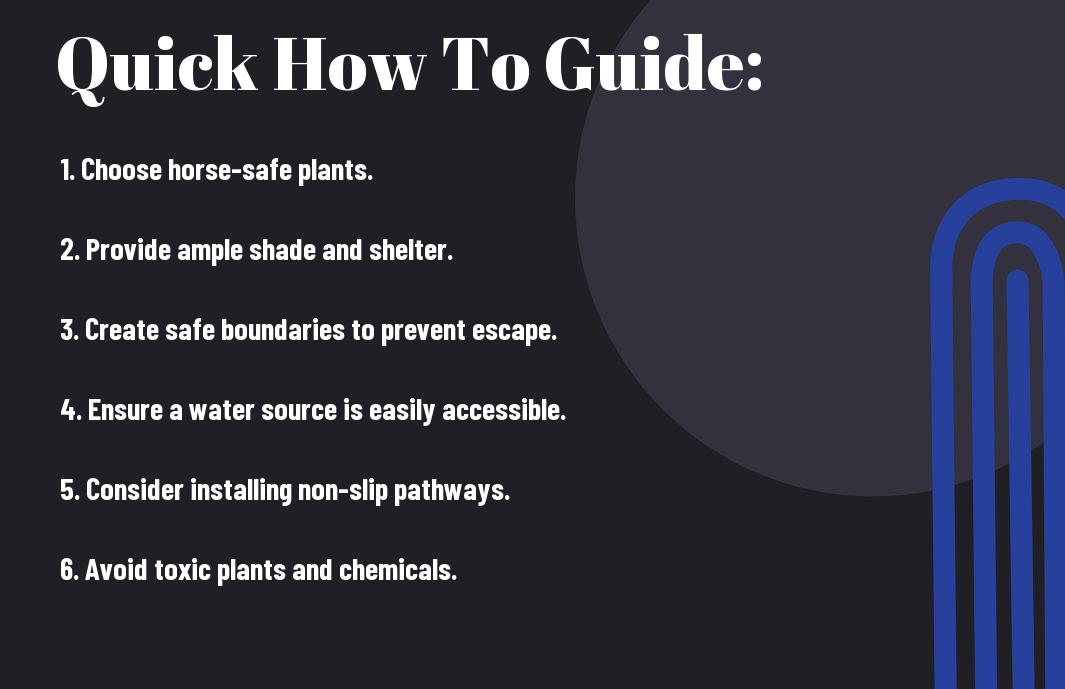
Understanding Horse Behavior and Needs
The factors to consider when designing a horse-friendly garden are crucial for the well-being of your equine companions. You must take into account their natural behavior, dietary needs, exercise requirements, and social interactions when creating a space that is both safe and enjoyable for them.
Factors to Consider When Designing a Horse-Friendly Garden
- Space: Ensure that your garden has enough room for horses to move around freely and graze.
- Safety: Remove any toxic plants or obstacles that could harm your horses.
- Shelter: Provide adequate shelter from the elements, such as a stable or run-in shed.
- Water: Access to fresh, clean water at all times is important for your horses’ health.
Any designing decisions you make should prioritize the safety and well-being of your horses above all else.
How Horses Interact with Their Environment
Even though horses are large and powerful animals, they are also prey animals that are sensitive to their surroundings. They are highly social creatures that rely on a herd dynamic for security and companionship. Understanding how they interact with their environment can help you create a space that promotes their mental and physical well-being.
Plus, horses are known to be curious and playful animals, so providing them with enrichment opportunities in the form of obstacles, toys, and interaction with other horses can keep them mentally stimulated and happy. It’s important to create a safe environment that allows for natural behaviors such as grazing, running, and socializing with other horses.
Choosing the Right Plants
It is necessary to choose the right plants for your horse-friendly garden to ensure the safety and well-being of your equine companions. When identifying plants, consider their toxicity, suitability for grazing, and maintenance requirements.
Toxic Plants to Avoid
Now, before planting any greenery in your horse-friendly garden, familiarize yourself with toxic plants that can be harmful to your horses. Some common plants that are toxic to horses include oleander, yew, foxglove, and buttercups. Make sure to remove these plants from your garden to prevent any accidental poisoning of your horses.
Horse-Friendly Plant Species
Choosing horse-friendly plant species is crucial for creating a safe and enjoyable environment for your equine friends. Look for plants like grasses, clover, and alfalfa that are nutritious and safe for grazing. These plants not only provide a natural and healthy diet for your horses but also add beauty to your garden.
This list is by no means exhaustive, but it gives you a good starting point for selecting horse-friendly plants for your garden. Consider consulting with a local horticulturist or equine specialist for recommendations tailored to your specific region and garden conditions.
Tips for Planting and Maintenance
The key to a successful horse-friendly garden is proper planting and maintenance. Here are some tips to help you create and care for your garden:
- Plant trees and shrubs strategically to provide shade and shelter for your horses.
- Regularly monitor your garden for any signs of toxic plants or overgrowth.
- Keep your garden well-maintained by mowing, fertilizing, and watering regularly.
The well-being of your horses depends on the care and attention you give to your horse-friendly garden. By following these tips, you can create a safe and beautiful outdoor space for you and your equine companions. Note, a healthy garden means happy horses!
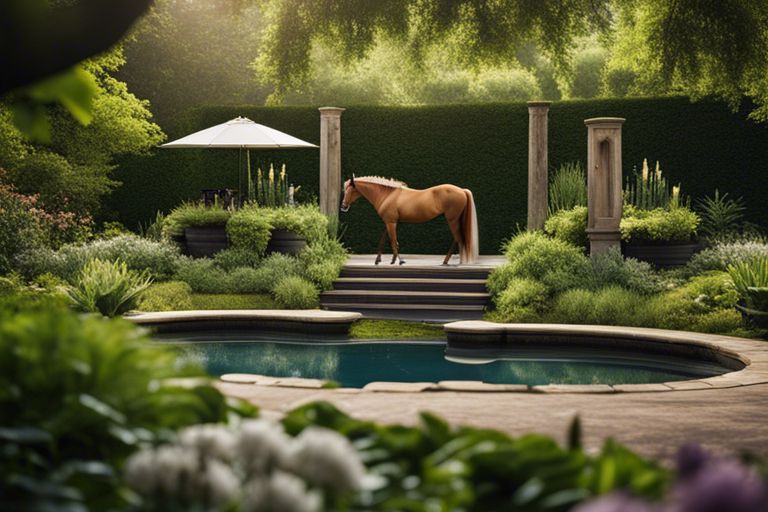
Designing Safe and Accessible Spaces
Fencing Options for Horse Safety
For your horse-friendly garden, it’s imperative to choose the right fencing to ensure your horse’s safety. Consider sturdy options such as wooden fencing or vinyl fencing that are difficult for horses to break through. Electric fencing can also be effective in keeping horses contained, but make sure it is installed correctly to avoid injuries.
Gate Design and Placement
Little details matter when it comes to gate design and placement in your horse-friendly garden. Choose gates that are easy to open and close to prevent any inconvenience when moving your horses in and out of different areas. Place gates strategically in areas where horses can easily access water sources or shelter.
Assuming you have multiple gates in your garden, make sure they are all uniform in design and size. This consistency will help your horses understand and navigate the space better, reducing the risk of accidents.
How to Create Clear Pathways and Walkways
Fencing is not the only consideration when designing your horse-friendly garden. Creating clear pathways and walkways is crucial to ensure easy movement for both you and your horses. Use materials such as gravel or sand for pathways as they provide good traction and are easy on your horse’s hooves.
On pathways, avoid sharp turns and sudden changes in elevation to prevent tripping hazards for your horses. Ensure pathways are wide enough for two horses to pass each other comfortably, making movement within the garden smooth and stress-free.

Water Features and Drainage
How to Design a Safe and Functional Watering System
Keep your horses safe by designing a watering system that is both functional and secure. When planning the layout of your water features, ensure that they are easily accessible to your horses but also protected to prevent any accidents. Consider installing automatic waterers in your garden for a constant water supply without the need for manual refills. Make sure the water source is clean and free from contaminants to promote good health for your horses.
Tips for Managing Water Runoff and Drainage
While designing your garden, pay attention to managing water runoff and drainage to prevent waterlogging and maintain a safe environment for your horses. Ensure that proper drainage systems are in place to avoid puddles and muddy areas that could pose a slipping hazard to your horses. Implement gravel pathways around water features to help with water absorption and reduce erosion. The grading of your garden should also be sloped away from high-traffic areas to direct water flow effectively.
- Install rain gardens to help absorb excess water
- Use permeable materials for walkways and paths
It is vital to manage water runoff properly to prevent soil erosion and maintain a safe and functional garden for your horses. Implementing these drainage strategies will help in creating a healthy and stable environment for your equine friends.
- By using sustainable landscaping techniques, you can reduce water runoff
- Regularly maintain and clean your drainage systems to prevent blockages and flooding
Creating a Comfortable Environment
Providing Shade and Shelter
If you want to create a comfortable environment for your horses in the garden, providing adequate shade and shelter is necessary. Horses can be sensitive to extreme weather conditions, so having shelter from the sun, rain, and wind will help keep them happy and healthy.
Consider installing run-in sheds or shaded areas where your horses can take refuge whenever they need to. This will give them the option to seek shelter and regulate their body temperature as needed.
How to Incorporate Comfortable Bedding and Flooring
If you want to enhance the comfort of your horse-friendly garden, pay attention to the bedding and flooring in the living area. A soft and clean bedding material like straw or shavings can provide a cozy resting place for your horses.
An ideal flooring option would be rubber mats which provide comfort and support for your horses as they move around the garden. Make sure to regularly clean and replace bedding and flooring materials to maintain a healthy environment for your horses.
Factors to Consider for Climate and Weather
An important aspect of designing a horse-friendly garden is considering the climate and weather conditions in your area. Here are some factors to keep in mind:
- Temperature fluctuations can affect your horses’ health and comfort.
- Wind exposure can cause stress and discomfort to your horses.
- Heavy rainfall can create muddy and slippery conditions.
For instance, providing adequate drainage and windbreaks can help mitigate these issues and ensure a safe and comfortable environment for your horses. Any sudden changes in weather should be monitored closely to make adjustments as needed.
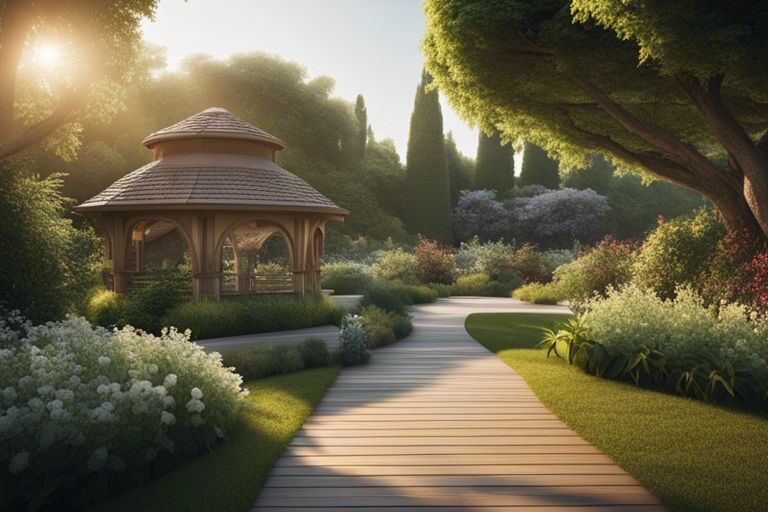
Maintenance and Upkeep
Tips for Regular Garden Maintenance
For regular garden maintenance, you should prioritize tasks such as weeding, watering, fertilizing, and trimming to keep your horse-friendly garden in top shape. Make sure to mulch around plants to help retain moisture and deter weeds. Invest in quality gardening tools to make your job easier and more efficient. The key is to stay on top of these tasks to ensure a healthy and thriving garden environment for your horses.
How to Manage Pests and Diseases
Assuming you encounter pests or diseases in your garden, it’s vital to identify the issue promptly. Even with preventative measures in place, pests and diseases can still find a way into your garden. Plus, regular inspection of your plants and soil can help catch any problems early on, allowing you to take appropriate action before they escalate.
Strategies for Controlling Weeds and Invasive Species
Maintenance is key when it comes to controlling weeds and invasive species in your horse-friendly garden. Regularly inspect your garden for any unwanted plants and remove them promptly. Implementing mulching, hand-weeding, and using natural herbicides are effective ways to keep these invaders at bay. Make sure to properly dispose of any weeds to prevent them from coming back.
Conclusion
Considering all points, designing a horse-friendly garden involves careful planning and consideration of the needs and behaviors of your equine companions. By incorporating safe fencing, ample grazing areas, and avoiding toxic plants, you can create a space that both you and your horses can enjoy. Providing shaded areas, water sources, and shelter will ensure that your horses are comfortable and protected from the elements. Additionally, incorporating sturdy paths and designated riding areas will help maintain the integrity of your garden while allowing for recreational activities with your horses.
Remember to regularly inspect your garden for any hazards or potential risks to your horses’ health and well-being. By creating a horse-friendly environment, you can promote the physical and mental health of your horses while enjoying a beautiful and functional outdoor space for both you and your equine friends to share.
FAQ
Q: Why is it important to design a horse-friendly garden?
A: It is important to design a horse-friendly garden to ensure the safety and well-being of the horses, as well as to create a harmonious environment that is conducive to their health and happiness.
Q: What are some key considerations when designing a horse-friendly garden?
A: Some key considerations include selecting horse-friendly plants, avoiding toxic plants, providing adequate space for grazing and exercise, and ensuring the garden is free of hazards such as sharp objects or poisonous materials.
Q: How can I incorporate water sources into a horse-friendly garden?
A: You can incorporate water sources such as troughs, ponds, or streams into a horse-friendly garden, making sure they are easily accessible to the horses and are kept clean and free of algae.
Q: What are some ways to create shaded areas for horses in a garden?
A: You can create shaded areas for horses by planting trees or installing shade structures such as shelters or awnings in the garden to provide protection from the sun and heat.
Q: How can I prevent horses from damaging the garden?
A: To prevent horses from damaging the garden, you can use fencing to create designated areas for the horses, provide them with plenty of grass and other forage to graze on, and ensure they have access to suitable distractions such as toys or scratching posts.
